Hunter, lover of music, negotiator & Marian devotee
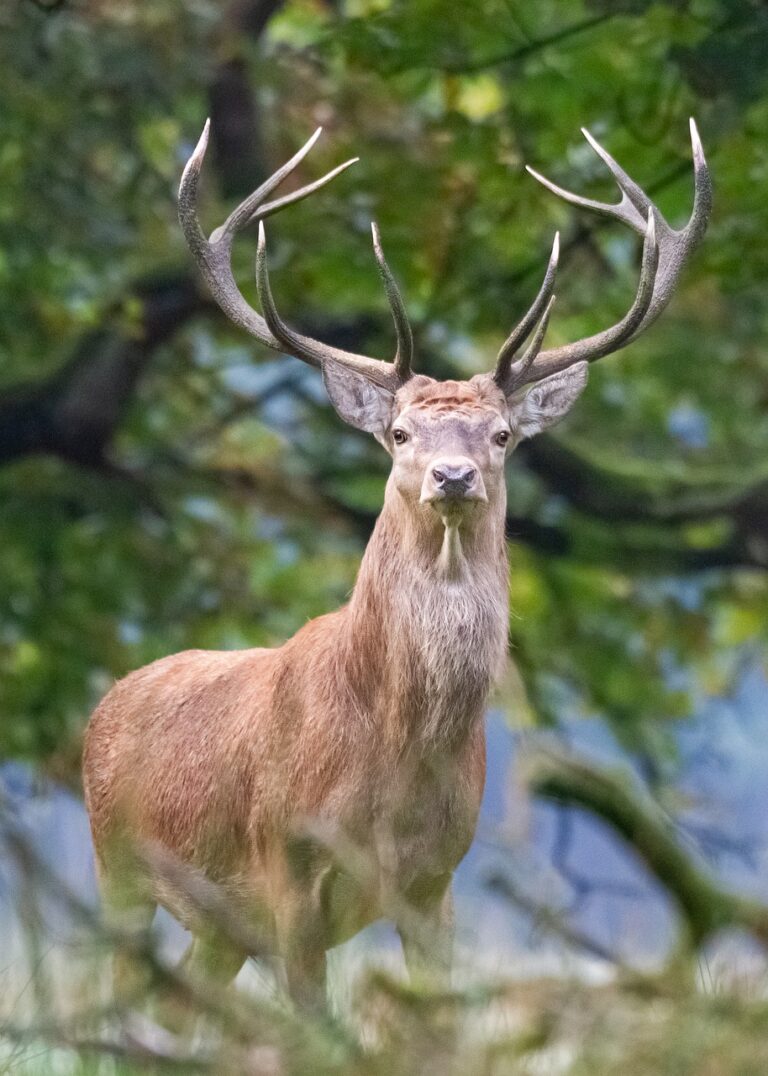


The Hunter
There are three highly detailed hunting scenes described by the poet. Sir John Chandos was a notable hunter, a man familiar with all the traditions and rules of the medieval hunt as detailed in the poem.
Chandos had something of a reputation as a huntsman as no less an authority than Gaston Febus requested to see his dogs while negotiating the status of his estates with the Black Prince. (Dr. David Green)
Febus in a letter to the Black Prince, suggests that the Prince gather ‘all of Chandos’ hounds and as many as you can have (and all others you can get) and I shall show you something of my knowledge (of the hunt)’ – Vernier. They were to meet at Augouleme or Perigueux – Barber
Gaston Febus obviously had a great respect for Sir John Chandos, especially as a huntsman, it appears his collection of hunting dogs drew particular attention from the Count of Foix. Chandos had hunted with the Black Prince in Wirral at Shotwick Park and also Macclesfield forest in 1353, on his visit to Cheshire. It was at this time he was made Keeper and Surveyor of the Cheshire forests of Wirral, Macclesfield and Delamere. Froissart also explains that Chandos had lost an eye to a stag in the forests of Bourdeaux, c1365.
Gaston Febus, the Count of Foix, was regarded as the greatest medieval huntsman, also a Warrior, Negotiator and Patron of Music. He was author of Livre de la chasse (Book of the Hunt)
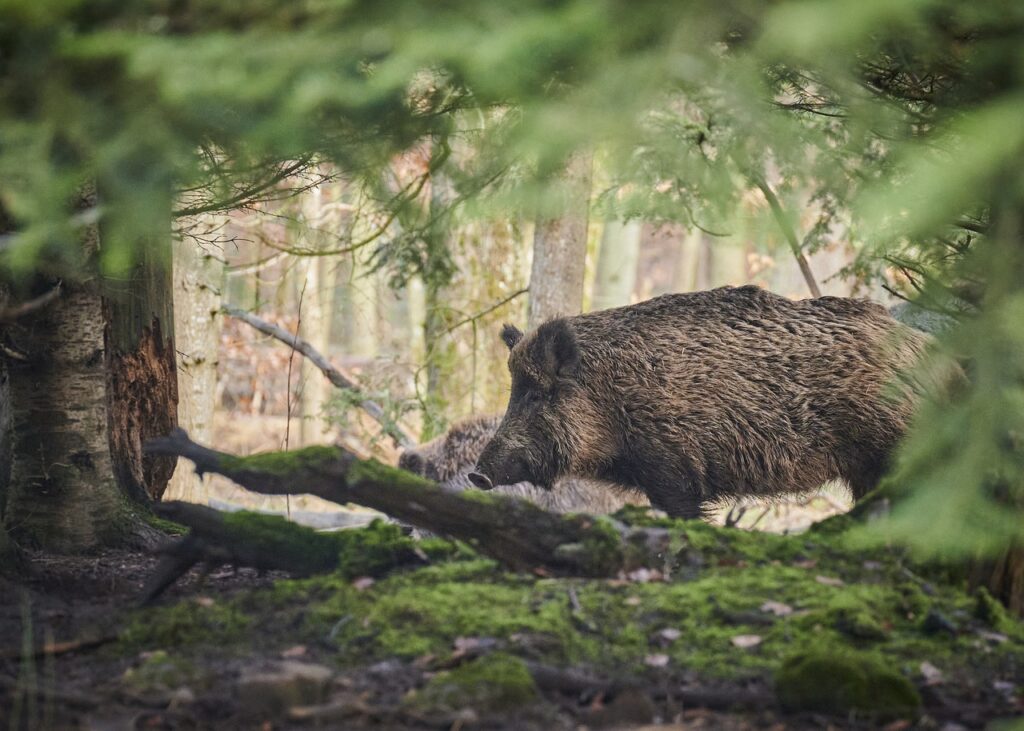
Lover of music
Sir John Chandos also had a love of music as explained by Froissart – in August, 1350, the king of England, Edward III, had mustered a fleet to engage the Spanish, off Winchelsea at the naval Battle of Les Espagnols sur Mer (“the Spanish on the Sea”), or the Battle of Winchelsea. The battle was a victory for an English fleet commanded by Edward III, with the Black Prince, over a Castilian fleet commanded by Don Carlos de la Cerda. Prior to the battle Edward stood on the prow of his ship, wearing a hat of beaver fur ‘which suited him very well’. At hand were several knights of the Garter, a new company of chivalry with its home at Windsor. King Edward was in good spirits; indeed he wanted music. He commanded his minstrels to pipe a certain ‘German dance’ that one of the knights, Sir John Chandos, had newly brought from Germany, and to add to the merriment he bade Sir John to sing it, ‘taking great delight therefrom’.
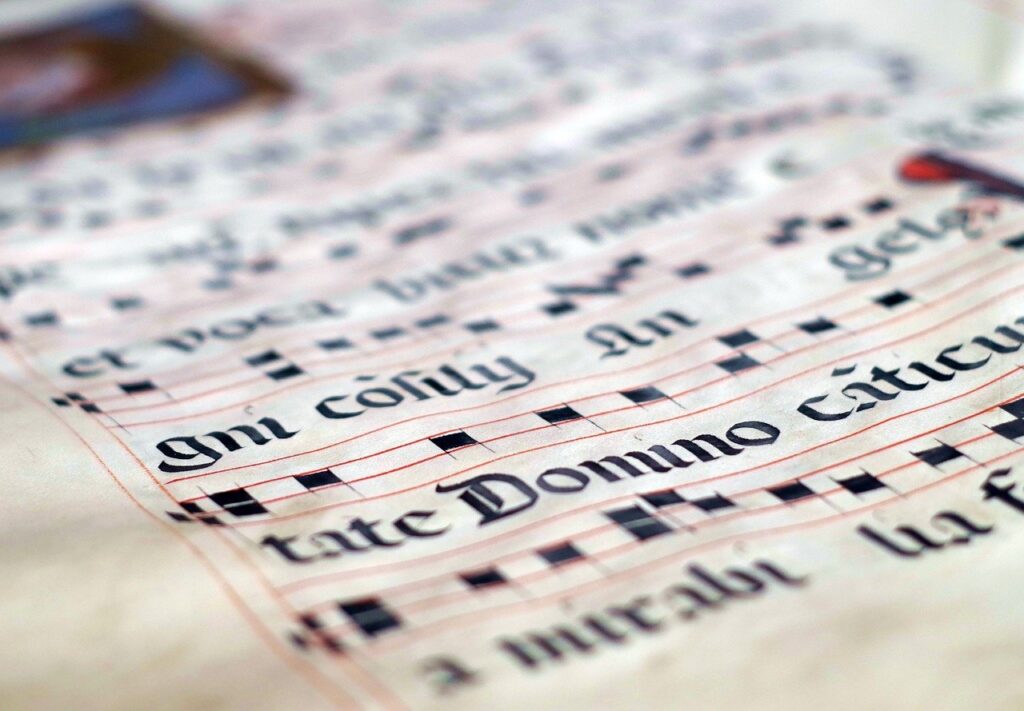
The Negotiator
Sir John Chandos had many of the qualities of Febus. According to Froissart Sir John Chandos and Gaston Febus had a great respect for each other as they ” loved each other for their great deeds”. Chandos was also a notable negotiator as It was believed by many Frenchmen, that if he had survived, he would have been the only one who could have brokered a peace between England and France.
Chandos also negotiated with Febus, the traversing of his lands in the Pyrenees for the free companies entering Spain. The Free Companies had been required, by the Black Prince, to join his army to do battle against Enrique of Trastamara’s forces at Najera in 1367. Sir John Chandos and Gaston Febus, Count of Foix had met many times – from, Sir John Chandos, The Perfect Knight by Stephen Cooper: Chandos was in Agen on 12 January 1364 when the Prince took the homage of Gaston Phoebus, Count of Foix. The proceedings were held in the parlement chamber of the House of the Friars Preacher, and although the Prince was present in person, the record shows that it was Chandos who was the spokesman and master of ceremonies.
In May 1366, when Pope Urban V wanted the Prince to make peace with Gaston Phoebus, Count of Foix, he sent the Archbishop of Toulouse to see the Prince and wrote to Chandos and others, asking them to assist.
The Count of Foix in 1367, was doing his best to prevent the mercenaries from crossing the Western Pyrenees into Aquitaine. Once again, the Prince had to call on Chandos’s diplomatic skills:
The Prince sent Chandos to meet and retain [the Companies]; and to assure the Count of Foix of his affection, and that he would pay double the amount of damage which [the Companies] might do in his territory. Chandos, out of his love for the Prince, took these messages and left Bordeaux, and rode to the city of Dax in Gascony, and then into Foix, where he found the Count. He spoke to him so wisely and courteously that he soon reached a provisional agreement, to allow free passage through his country.
Chandos returned to the Count of Foix and asked him, tactfully, if he would indeed allow the Companies to pass through one of the corners of his land. The Count of Foix, who wanted to please the Prince… agreed, provided that they did no damage to him or his lands. Chandos agreed to this, and sent one of his knights and a herald back to the Companies, telling them that the treaty
between him and the Count was concluded; and he returned to the Principality. He found the Prince in Bordeaux and related his journey and how he had fared. The Prince, who trusted him and held him in high regard was well content with the outcome.
The Prince had good reason to feel pleased with the progress which his servant had made. Chandos Herald tells us that Sir John recruited fourteen Companies altogether.
Sir Hugh Calveley was a 7ft+ giant in charge of these companies whose men were described as the ‘Dogs of War’. Calveley had also been in charge of the reserve division of the forces of Jean de Montfort, under the command of Sir John Chandos, at the battle of Auray in 1364. Calveley was a noteable Captain of the Hundred Years War.
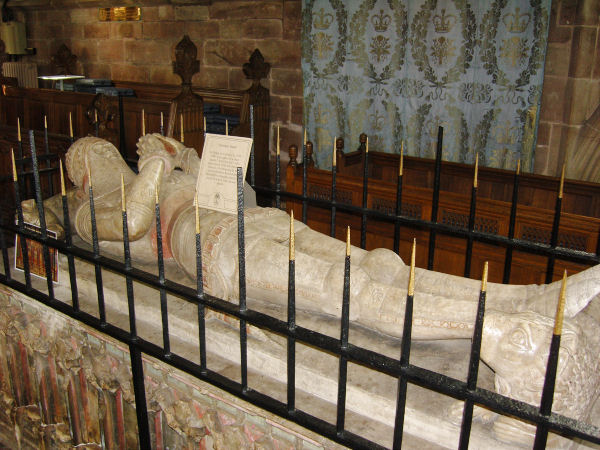
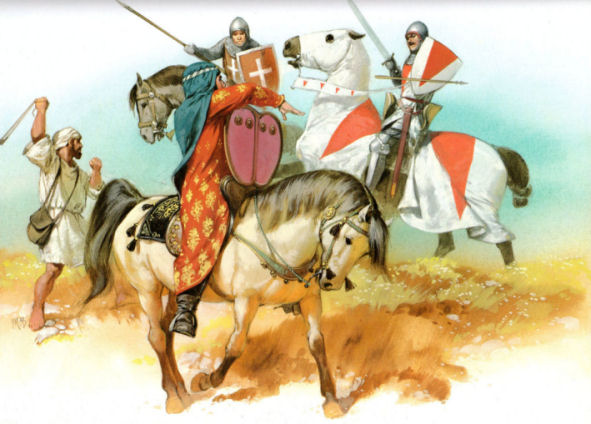
Marian devotion
It is mentioned in the poem that Sir Gawain had the Virgin Mary painted on the inside of his shield – And wherever this man found himself in battle, his earnest intent was on this, above all else: that he should get all his fortitude from the five joys that the gracious Queen of Heaven had in her Child. (For this reason the knight had her image fittingly painted on the inner side of his shield, so that when he glanced at it his courage never diminished.)
The Virgin Mary or bleue Dame is mentioned before the battle of Poitiers as being an armorial device used by Chandos. Various references from other sources, Rev. George Shand, Joshua Barnes, M. J. Huxtable, Rodney Dennys, The Heraldic Imagination, all describe the Virgin Mary as being used by Chandos as one of his armorial devices used either on his shield or on his surcoat.
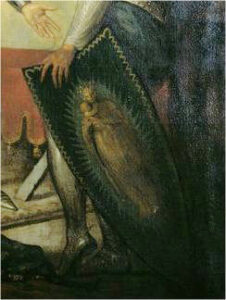
“He (Chandos) founded and endowed the Carmelite convent at Poitiers.” – from, Thomas Johnes Froissart. The Order of Carmelites was considered by the Church to be under the special protection of the Blessed Virgin Mary and as a consequence, was a Marian devotion. In his book ‘The Heraldic Imagination’, Rodney Dennys says: “It is not without significance that the poem on the life and feats of arms of the Black Prince, the victor of Poitiers, was written by the herald of Sir John Chandos and, like its contemporary poem Sir Gawain and the Green Knight, illuminates the spirit of chivalry of our intensley pious forefathers. Indeed, Sir Gawain himself is said to have had the image of Our Lady painted ‘in the inore half of his schelde’, and it would be characteristic of Sir John Chandos to follow the romantic example of King Arthur who, Geoffrey of Monmouth tells us, had the image of the Virgin sewn on his armour at the Battle of Mount Badon. The romantic revival of the fourteenth century was in full flood by this time, and King Edward III and the Black Prince and their court were the leaders of this revival.”
SHAND – Some Notices of the surname of SHAND By Rev George Shand, Norwich 1877
It is a somewhat remarkable circumstance that in the records of the office of the Lord Lyon in Edinburgh, several coats of arms, in no respect resembling each other, are assigned to the name of Shand……………………………..The next coat of arms appropriated to the name Shand, in the registers of the Lyon office, is a very striking and beautiful escutcheon, viz., Azure in the Sun, the Virgin Mary with the Babe, all proper. To the entry is subjoined the following note, “see Randle Holmes Book, ii c 1, fig 45, for the manner of drawing.” It appears, as we shall see by and by, that in the times before the Reformation, there were several dignified ecclesiastics in the diocese of Aberdeen of the name Schand.
This fact, taken in connection with the peculiar nature of these armorial bearings themselves led us at one time to think that they might have been used by some of those individuals. But, on further enquiry, we are satisfied that this is really French heraldry, and that these bearings are the arms of the family of Chandos or Shandos, which, as is well known, produced several distinguished captains in the course of the long wars between the English and the French.